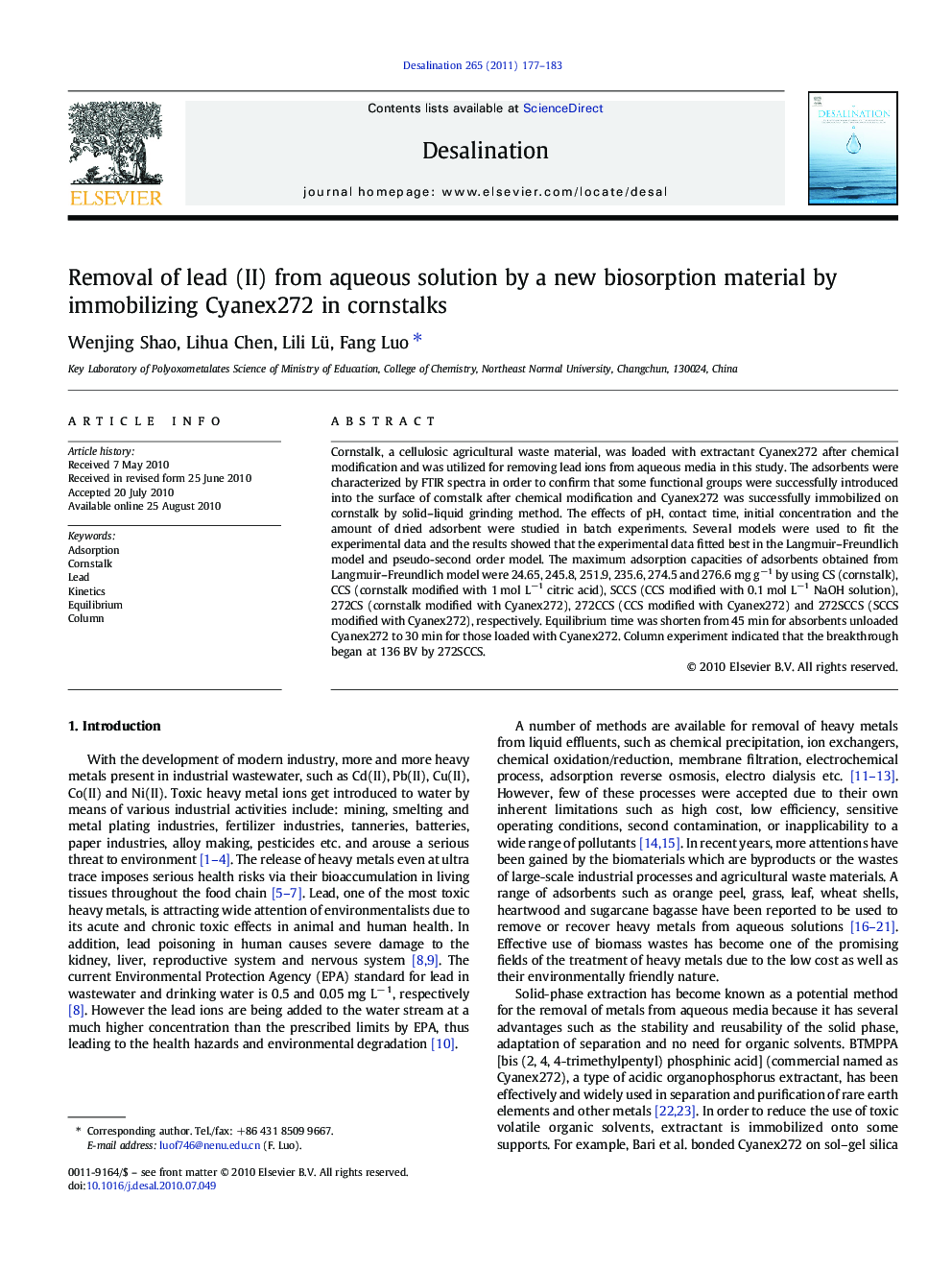| Article ID | Journal | Published Year | Pages | File Type |
|---|---|---|---|---|
| 625379 | Desalination | 2011 | 7 Pages |
Cornstalk, a cellulosic agricultural waste material, was loaded with extractant Cyanex272 after chemical modification and was utilized for removing lead ions from aqueous media in this study. The adsorbents were characterized by FTIR spectra in order to confirm that some functional groups were successfully introduced into the surface of cornstalk after chemical modification and Cyanex272 was successfully immobilized on cornstalk by solid–liquid grinding method. The effects of pH, contact time, initial concentration and the amount of dried adsorbent were studied in batch experiments. Several models were used to fit the experimental data and the results showed that the experimental data fitted best in the Langmuir–Freundlich model and pseudo-second order model. The maximum adsorption capacities of adsorbents obtained from Langmuir–Freundlich model were 24.65, 245.8, 251.9, 235.6, 274.5 and 276.6 mg g−1 by using CS (cornstalk), CCS (cornstalk modified with 1 mol L−1 citric acid), SCCS (CCS modified with 0.1 mol L−1 NaOH solution), 272CS (cornstalk modified with Cyanex272), 272CCS (CCS modified with Cyanex272) and 272SCCS (SCCS modified with Cyanex272), respectively. Equilibrium time was shorten from 45 min for absorbents unloaded Cyanex272 to 30 min for those loaded with Cyanex272. Column experiment indicated that the breakthrough began at 136 BV by 272SCCS.
